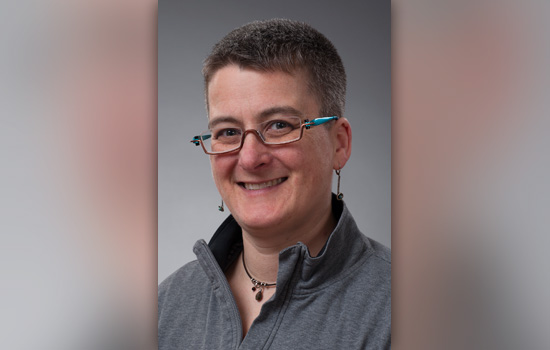NTID awarded grant for educational training
Funding will provide additional training for faculty in STEM disciplines who teach deaf, hard-of-hearing students
Sara Schley
Rochester Institute of Technology’s National Technical Institute for the Deaf has been awarded a $443,200 grant from the National Science Foundation to provide additional training for faculty in science, technology, engineering and math disciplines who teach classes in which deaf, hard-of-hearing and hearing students are present.
The three-year grant will help develop an “accessibility toolkit” for faculty who are searching for viable ways to adapt their teaching methodologies to accommodate the learning needs of deaf and hard-of-hearing students.
Sara Schley, co-director of NTID’s Research Center for Teaching and Learning and principal investigator, said the project will combine faculty engagement in instructional change, universal design for teaching and learning and student-centered pedagogy that all ultimately enhance inclusiveness within the classroom. Co-principal investigators on the grant are associate professors Jessica Cuculick from NTID and Stephanie Cawthon from The University of Texas at Austin.
“Faculty members who teach deaf and hard-of-hearing students may assume that notetaking services and interpreting services, for example, are tools that sufficiently provide an adequate learning environment,” Schley said. “While these services certainly assist the students with their learning, we’ve found that there are many other ways that instructors can adapt their teaching styles to enhance the learning environment for our students. This project is meant to provide relevant information to our faculty in a supportive way.”
Schley cites one example. Inside the classroom, faculty may explain complicated STEM concepts by showing slides while sign-language interpreters translate the information to a deaf student. However, it’s extremely difficult for deaf and hard-of-hearing students to look at slides while watching an interpreter. This often results in the student missing valuable dialogue and classroom interaction.
Ultimately, Schley and the project team, which includes a cohort of deaf and hard-of-hearing students, will create faculty learning communities—facilitated by hearing and deaf faculty pairs in similar disciplines—in order to brainstorm alternative learning ideas, propose experiments and test the efficacy of the alternatives.
In the scenario mentioned above, added Schley, faculty may experiment with pausing after showing a slide or writing on a white board, and checking for “eyeballs” in order to be sure that students have finished reading the information and are ready to shift their focus back to the instructor or the interpreter.
Schley also says that the learning communities will be asked to investigate applications using more advanced technology such as “flipped” learning. In this case, faculty might add cues for students that encourage them to pause and review a graphic explanation after seeing a captioned explanation.
Robert Garrick is a manufacturing and mechanical engineering technology professor in RIT’s College of Applied Science and Technology. He teaches future engineers using a technology-rich, interactive learning environment with hundreds of instructor and student videos in a classroom with 10 interactive projectors.
“I am especially interested in this project to understand how we, as instructors, can improve accessibility with the emerging multimedia tools we use,” said Garrick. “Our teaching and accessibility techniques are hopefully evolving as quickly as our technology tools in order to provide individualized instruction while giving continuous feedback to each student based on their needs.”
Schley added that, simply put, the project is about the best way to engage in collaborative learning because there are many different kinds of learners in the same classroom.
“We’re helping our faculty to take a little more time to think about meeting the needs of their students and designing activities that don’t depend on a particular channel of information. This is about good teaching.”














